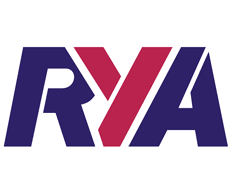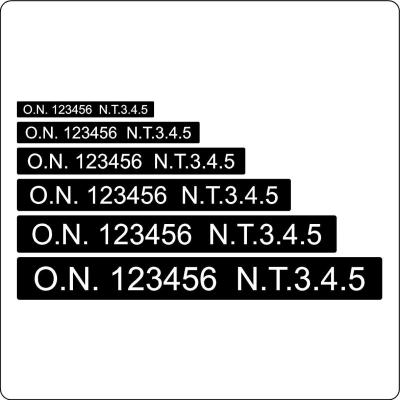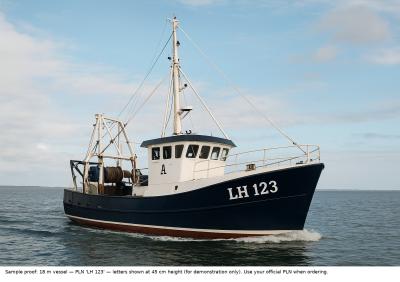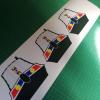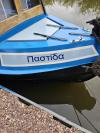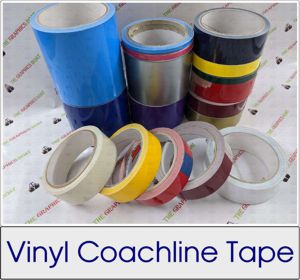Fitting Guidance - Wet or Dry Method

How to Fit Vinyl Graphics on Boats and Caravans: The Best Method for a Lasting Finish
Adding new vinyl graphics is one of the quickest and most effective ways to refresh the look of your boat, caravan, or motorhome. Whether you’re applying name decals, stripes, or a full side graphic, success depends on more than just steady hands — the temperature, surface preparation, and application method all make a huge difference.
Here’s a step-by-step guide to achieving a clean, professional finish with polymeric vinyl graphics that will last season after season.
1. The Importance of Temperature
Vinyl adhesives perform best within a specific temperature range. When working outdoors on a leisure vehicle, the surface temperature can be very different from the air temperature — especially on shiny or white panels.
-
✅ Ideal temperature: 10°C–25°C (50°F–77°F)
-
❄️ Too cold (<10°C): The vinyl becomes stiff and the adhesive loses tack, leading to poor adhesion and possible lifting.
-
☀️ Too hot (>25°C): The vinyl gets too soft, sticks before you can position it properly, and can trap bubbles.
Tip:
Always check the panel temperature with your hand. If it feels cold, gently warm the surface with a hair dryer or heat gun before fitting. If it’s hot to the touch, move into the shade or wait until late afternoon.
2. Choose Between Wet or Dry Application
The two main ways to apply vinyl graphics are dry and wet. The right choice depends on the size of your decal and the type of surface you’re working with.
Dry Application
Perfect for:
-
Smaller decals or lettering
-
Straight or slightly curved areas
-
Quick, clean applications
How to do it:
-
Position your decal using masking tape “hinges.”
-
Peel a small section of backing paper and start from one edge.
-
Use a squeegee to press the vinyl down firmly from the centre outwards, removing air as you go.
-
Once applied, slowly remove the transfer tape at a low angle.
Advantages:
-
Fast and clean — no drying time.
-
Excellent adhesion in moderate temperatures.
Disadvantages:
-
Less forgiving — once it sticks, it’s stuck.
-
Not ideal for large panels.
Wet Application
Best for:
-
Larger graphics or side panels
-
Smooth or glossy surfaces like GRP, painted metal, or glass
-
Warm conditions where dry application is difficult
How to do it:
-
Mix a few drops of mild detergent or baby shampoo in a spray bottle of clean water.
-
Lightly mist the surface and the adhesive side of the vinyl — don’t soak it.
-
Apply the graphic, adjust position as needed, and use a squeegee to push out the water and bubbles.
-
Allow 30–60 minutes (or longer in cool weather) before removing the application tape.
Advantages:
-
Easier to position and align large decals.
-
Reduces trapped air on smooth surfaces.
Disadvantages:
-
Requires drying time before the tape can be removed.
-
Not suitable for textured or porous surfaces.
3. Preparation Is Key
Good preparation ensures long-lasting adhesion — especially important for vehicles exposed to sun, rain, and salt air.
-
Clean thoroughly: Remove wax, polish, silicone, and grease using a 50/50 mix of isopropyl alcohol and water.
-
Dry completely: Any moisture will prevent the vinyl from bonding properly.
-
Avoid fingerprints: Handle the vinyl by the edges and avoid touching the adhesive side.
4. Curves, Edges, and Contours
Boats and caravans often have moulded corners or gentle curves. Polymetric vinyl can handle these easily when applied with care.
-
Work gradually, using firm, even pressure with your squeegee.
-
For tight curves or corners, gently warm the vinyl with a heat gun to improve flexibility.
-
Press down edges firmly to ensure a secure seal.
If a section lifts slightly, reheat and press it down again while warm.
5. Aftercare and Curing
Once your vinyl graphics are fitted:
-
Allow 24 hours before washing or polishing.
-
Avoid direct water pressure (like jet washing) for at least a day.
-
Clean with mild soapy water only — avoid solvents or abrasive cleaners.
-
Regular cleaning keeps your graphics looking sharp and prevents edge dirt build-up.
Quick Reference Guide
| Graphic Size | Surface Type | Temperature | Best Method | Notes |
|---|---|---|---|---|
| Small decals / lettering | Flat or slightly curved | 15–25°C | Dry | Quick and simple |
| Large side panels | Smooth GRP or painted metal | 10–20°C | Wet | Easier positioning |
| Curved areas | Caravan ends, hull sides | 18–25°C | Dry with light heat | Work slowly |
| Glass / acrylic | Windows | 15–20°C | Wet | Reduces bubbles |
6. Common Mistakes to Avoid
-
Applying in direct sunlight or freezing conditions
-
Fitting over wax, polish, or dirt
-
Rushing the job — always check alignment before pressing down
-
Removing transfer tape too soon after wet application
In Summary
For the best results when fitting polymeric vinyl graphics on boats, caravans, and motorhomes:
-
Work between 10°C and 25°C
-
Use the wet method for large or glossy surfaces, and dry for smaller decals
-
Take time to prepare the surface properly and apply steady pressure during fitting
With the right conditions and a careful approach, your vinyl graphics will stay smooth, vibrant, and secure for years to come — whatever the weather or journey.



